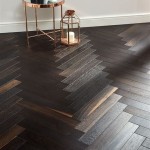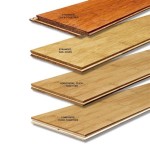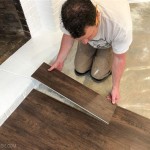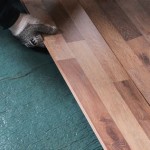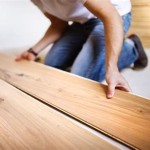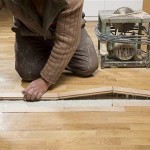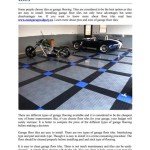Most Durable Scratch Resistant Flooring in Singapore
Choosing the right flooring for a home or business in Singapore involves careful consideration of various factors, including aesthetics, maintenance, and durability. Given Singapore's humid climate and the potential for heavy foot traffic in many spaces, scratch resistance becomes a paramount concern. This article explores several flooring options known for their durability and scratch-resistant properties, providing insights into their suitability for different needs and budgets.
The need for scratch-resistant flooring arises from several common sources. Foot traffic, especially from shoes with hard soles or small debris caught underneath, can cause surface scratches. Pets, particularly dogs and cats, contribute significantly to wear and tear on floors. Moving furniture, even with careful precautions, can result in scratches if not properly protected. Finally, everyday spills and accidents, if not promptly cleaned, can lead to surface damage that makes the floor more susceptible to scratches. This article will cover several common flooring types that have been formulated to withstand these causes of everyday wear and tear, making them appropriate choices for homes and businesses.
Luxury Vinyl Tile (LVT)
Luxury Vinyl Tile (LVT) has gained considerable popularity in Singapore due to its combination of aesthetics, durability, and affordability. LVT is engineered with multiple layers, the most crucial of which is the wear layer. The thickness of the wear layer, typically measured in mils (thousandths of an inch), directly correlates to the floor's scratch resistance. A thicker wear layer provides greater protection against surface damage from everyday activities. When looking at commercial LVT, it is necessary to look for a thicker wear layer that can endure potentially heavy traffic.
Specifically engineered LVT products incorporate enhanced scratch-resistant coatings. These coatings, often made with urethane or ceramic bead technology, provide an additional barrier against abrasions. Unlike traditional vinyl flooring, LVT is designed to mimic the appearance of natural materials like wood, stone, and tile. High-quality LVT utilizes advanced printing technologies to create realistic textures and patterns, adding to its visual appeal.
LVT is relatively easy to maintain. Regular sweeping or vacuuming is sufficient to remove dirt and debris. For deeper cleaning, a damp mop with a neutral pH cleaner is recommended. The waterproof nature of LVT makes it suitable for areas prone to moisture, such as kitchens and bathrooms. However, aggressive cleaning agents should be avoided as they can damage the surface coating and reduce its lifespan. LVT is often selected due to its easy installation, allowing for DIY projects or quick turnarounds during renovations. It is typically installed through a click-lock system or with adhesive, depending on the specific product and subfloor.
Laminate Flooring
Laminate flooring is another cost-effective and durable option for Singaporean homes and businesses. Similar to LVT, laminate flooring consists of multiple layers, including a core board, a decorative layer, and a top wear layer. The wear layer, often made of aluminum oxide, is responsible for the flooring's scratch resistance. The Abrasion Class (AC) rating measures the wear resistance of laminate flooring. Higher AC ratings indicate greater durability and scratch resistance.
Laminate flooring offers a wide variety of styles that mimic the appearance of natural wood, stone, and tile. High-definition printing technologies create realistic textures and patterns, often indistinguishable from the real thing. The embossed-in-register (EIR) technique further enhances the realism by aligning the texture with the printed design. The AC rating for laminate flooring ranges from AC1 to AC5. AC1 and AC2 are suitable for light residential use, while AC3 is appropriate for general residential use and light commercial use. AC4 and AC5 are designed for heavy commercial use and offer the highest level of scratch resistance.
Regular sweeping or vacuuming is sufficient for daily maintenance. A damp mop with a specialized laminate floor cleaner can be used for deeper cleaning. Excessive water should be avoided to prevent damage to the core board. Laminate flooring is typically installed using a click-lock system, making it relatively easy for DIY installation. However, proper subfloor preparation is crucial to ensure a smooth and stable surface. Compared to solid hardwood, laminate flooring is more resistant to scratches, dents, and stains. However, it is not as water-resistant as LVT and should be avoided in areas prone to excessive moisture.
Engineered Hardwood Flooring
For those seeking the authentic look and feel of hardwood but with enhanced stability and scratch resistance, engineered hardwood flooring is a viable option. Engineered hardwood consists of a thin layer of real hardwood veneer bonded to a core of multiple layers of plywood or high-density fiberboard (HDF). This construction makes it more resistant to warping and expansion compared to solid hardwood.
The scratch resistance of engineered hardwood depends on the type of finish applied to the hardwood veneer. Polyurethane finishes with aluminum oxide additives provide excellent protection against scratches and abrasions. Some manufacturers also offer enhanced scratch-resistant finishes that further improve durability. The veneer layer in engineered hardwood varies in thickness, with thicker veneers allowing for more refinishing over the floor's lifespan. Multiple layers of plywood or high-density fiberboard provide stability and resistance to moisture. These floors are often chosen for their sustainable use of wood, as it uses less virgin hardwood compared to solid hardwood flooring.
Regular sweeping or vacuuming is recommended to remove dirt and debris. A damp mop with a wood floor cleaner can be used for deeper cleaning. Avoid using excessive water, as it can damage the wood veneer. Engineered hardwood can be professionally refinished to remove scratches and restore its original appearance. The number of times it can be refinished depends on the thickness of the veneer layer. Engineered hardwood can be installed using various methods, including gluing, nailing, or floating. Proper subfloor preparation is essential to ensure a stable and level surface. While engineered hardwood is more resistant to moisture than solid hardwood, it is still susceptible to damage from excessive water. It is important to clean up spills promptly to prevent warping or staining.
Tile Flooring: Porcelain and Ceramic
Porcelain and ceramic tile are excellent choices for areas requiring high durability and scratch resistance. These materials are inherently resistant to scratches, stains, and moisture, making them suitable for high-traffic areas like kitchens, bathrooms, and entryways. Tile flooring is a very popular choice in Singapore as a result of its functional properties and widespread availability. While they require minimal maintenance, they are often chosen by businesses for aesthetic reasons as well.
Porcelain tile is denser and more durable than ceramic tile, making it more resistant to scratches and wear. Porcelain tile is fired at higher temperatures, resulting in a harder and less porous material. The Porcelain Enamel Institute (PEI) rating measures the abrasion resistance of ceramic and porcelain tiles. A higher PEI rating indicates greater durability. PEI ratings range from 1 to 5, with PEI 5 being the most durable and suitable for heavy foot traffic. Ceramic tiles are manufactured by firing clay at high temperatures. They are less dense than porcelain tiles and are generally more affordable. Both porcelain and ceramic tiles are available in a wide range of colors, patterns, and sizes. Advanced printing technologies can create realistic textures that mimic natural stone, wood, and other materials.
Regular sweeping or vacuuming is sufficient for daily maintenance. A damp mop with a neutral pH cleaner can be used for deeper cleaning. Grout lines should be cleaned regularly to prevent staining. Porcelain and ceramic tiles are highly resistant to moisture and can be used in wet areas without concern. However, it is important to ensure proper sealing of grout lines to prevent water penetration. Tile flooring requires professional installation to ensure proper alignment and adhesion. The subfloor should be level and stable to prevent cracking. While tile is highly durable, it can be susceptible to chipping or cracking from heavy impacts. It is important to avoid dropping heavy objects on tile floors.
Concrete Flooring
Polished concrete flooring offers a unique combination of durability, aesthetics, and sustainability. Concrete is inherently scratch-resistant, making it suitable for high-traffic areas in both residential and commercial settings. Advances in polishing techniques have transformed concrete from a utilitarian material into a stylish and versatile flooring option. Concrete is often the top choice for businesses looking to reduce their building's carbon footprint, as it is both durable and requires minimal maintenance.
The scratch resistance of concrete flooring can be further enhanced by applying sealers and coatings. These coatings provide an additional layer of protection against abrasions and stains. Polished concrete can be customized with various finishes, including matte, satin, and high-gloss. Dyes and stains can be added to create a wide range of colors and patterns. The process of polishing concrete involves grinding the surface with progressively finer abrasives to achieve the desired level of smoothness and shine. This process densifies the concrete, making it more resistant to scratches and stains.
Regular sweeping or dust mopping is sufficient for daily maintenance. A damp mop with a neutral pH cleaner can be used for deeper cleaning. Avoid using harsh chemicals or abrasive cleaners, as they can damage the surface. Polished concrete is relatively low-maintenance. However, it may require periodic re-sealing to maintain its luster and protect it from stains. Concrete flooring requires professional installation. The concrete slab must be properly prepared and leveled before polishing. While concrete is highly durable, it can be susceptible to cracking if the subfloor is not properly prepared. Expansion joints are necessary to accommodate movement due to temperature and humidity changes.
Terrazzo Flooring
Terrazzo is a composite material consisting of marble, granite, glass, or other aggregates bound together by a cementitious or resinous matrix. This unique composition results in a highly durable and scratch-resistant flooring option. Terrazzo has been used for centuries and is known for its longevity and aesthetic appeal. It is often favored by schools and hospitals as a result of its low maintenance and inherent slip resistance.
The scratch resistance of terrazzo depends on the type and size of the aggregates used, as well as the type of binder. Epoxy terrazzo is more resistant to scratches and stains than cementitious terrazzo. Terrazzo is available in a wide range of colors, patterns, and designs. It can be customized to create unique and visually stunning floors. The process of installing terrazzo involves pouring or placing the mixture of aggregates and binder, followed by grinding and polishing to achieve a smooth and even surface.
Regular sweeping or dust mopping is sufficient for daily maintenance. A damp mop with a neutral pH cleaner can be used for deeper cleaning. Avoid using harsh chemicals or abrasive cleaners, as they can damage the surface. Terrazzo is relatively low-maintenance. However, it may require periodic sealing to protect it from stains. Terrazzo flooring requires professional installation. The subfloor must be properly prepared and leveled before pouring the terrazzo mixture. While terrazzo is highly durable, it can be susceptible to cracking if the subfloor is not properly prepared.

What Is The Most Durable Type Of Flooring Painting Contractor

What Is The Most Durable Type Of Flooring Singapore

The Most Durable Homes And Flooring Floor Gallery

What Is The Most Durable Type Of Flooring Singapore

Herf Flooring Completely 100 Waterproof Laminate Sg

What Is The Most Durable Type Of Flooring Singapore

What Is The Most Durable Type Of Flooring Singapore

The Most Durable Homes And Flooring Floor Gallery

What Is The Most Durable Type Of Flooring Singapore

6 Most Popular Flooring Types In Singapore Vinyl Marble Laminate Which Is The Best
See Also
